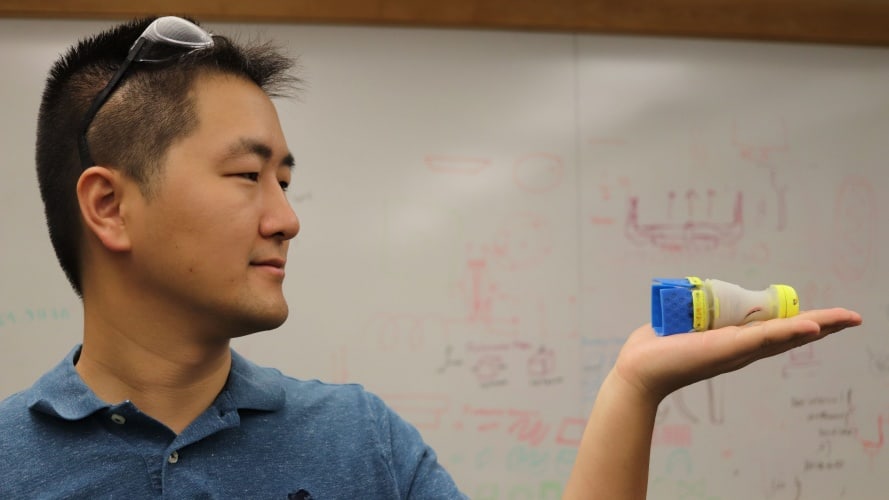The shortlist for this year’s James Dyson Award has been announced, with 20 students from around the world nominated for their engineering inventions.

Several of this year’s cohort have come up with concepts designed to improve urban living, including plastic cutlery made from potato waste, a robot to combat water pollution and prefabricated ants nests for the cultivation of the insects as a food source.
“The breadth and ambition of the entries we have seen this year is outstanding,” said Peter Gammock, VP of Design and New Technology at Dyson. “Young engineers are restless in the face of global issues, and they see technology as a catalyst for creating a better future. They demonstrate clearly how simple ingenious concepts have the power to revolutionise the way people live.”
One entry that has grabbed the judges’ attention is Lighthouse, a soft robot that can detect leaks inside water pipes. As the robot passively flows through a pipe and navigates around pipe elbows, a sensor is tugged by the suction force of a water leak. When a leak is detected, Lighthouse measures the strength of the tug and records the location. Inventor You Wu said the inspiration for the robot came from his childhood in China, where water shortages were a regular occurrence.
“My interest in environmental sustainability started in childhood with a conflict between resource scarcity and population growth,” said Dr Wu, a recent doctoral graduate of MIT.
“When I grew up in China, my community had one day without power and another day without water every single week. The city regulated the supply to all communities to lower the burden on the power grid and water system. I grew up thinking we were good citizens conserving energy and water for the greater good. However, when I learned that every day 20 per cent of clean water in the world is lost due to leaks while we were making a sacrifice to conserve water, I thought this was wrong and I needed to change it.”
The full list of international Dyson Award finalists can be found here, with the winner set to be revealed on November 15th.




Poll: Should the UK’s railways be renationalised?
The term innovation is bandied about in relation to rail almost as a mantra. Everything has to be innovative. There is precious little evidence of...